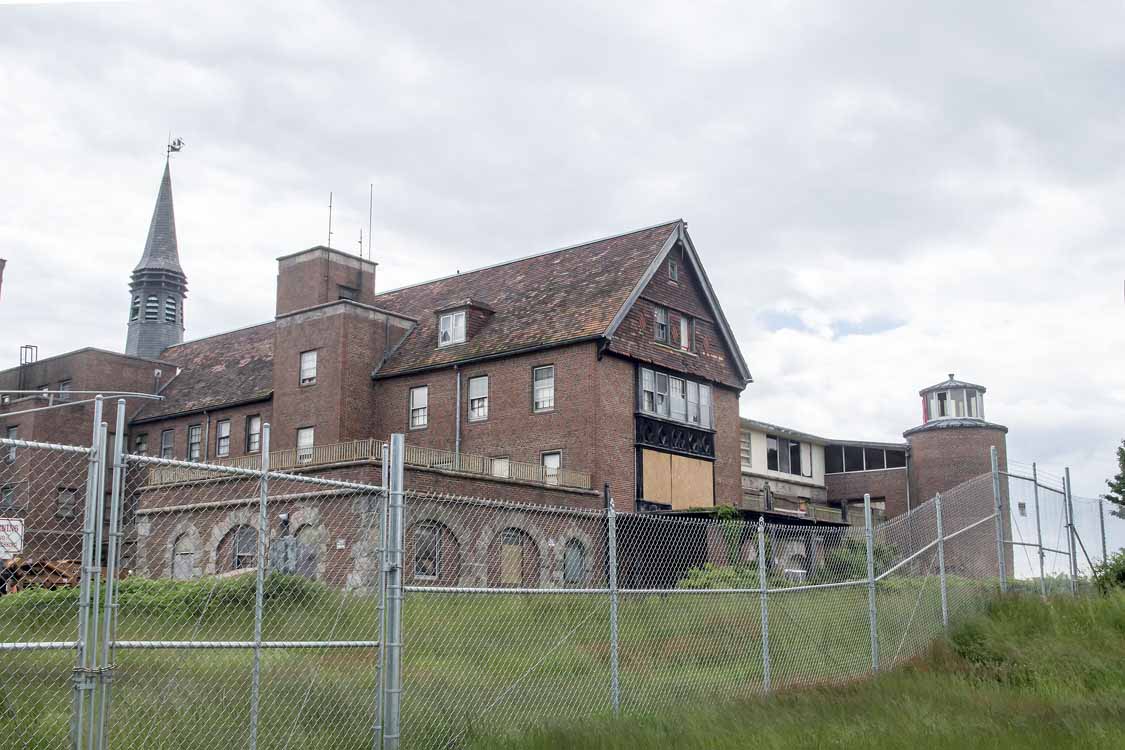

The Tucson Medical Center opened in its place a year later and has continued its use of the former Desert Sanitarium to this day. Similar to other sanitariums, the Desert Sanitarium campus included structures used for treatment, research offices and labs, and staff residences. It also became the first medical institution in the nation to measure the sun's radiation levels with a radiometer. Jaastad and Annie Rockfellow designed the Desert sanitarium in the pueblo revival style that attempted to treat tuberculosis through direct solar radiation. In November 1926, the architecture firm of Henry O.

The effort was so effective, in fact, that by the 1920s, demand necessitated the adoption of strict zoning ordinances in cities such as Tucson, Arizona, to regulate the placement and construction of sanitariums. The dry desert climate, abundant sunshine, and Native American healing practices of the Southwest were also marketed to tuberculosis patients in the East. Like many sanitariums of the day, Cragmor was designed to be a self-sufficient community and boasted its own laundry facilities, stables, and greenhouses in addition to typical hospital buildings and staff residences. Samuel Edwin Sully and famed architect Thomas MacLaren designed a medical facility that would take advantage of natural light, fresh air, and cool mountain breezes. Of the city’s many facilities, Cragmor emerged as the crown jewel. In the early 20th century, patients gravitated to Colorado Springs for its mountain lifestyle, fresh air, natural springs, and sanitariums. For centuries, European patients flocked to health resorts in the Swiss Alps while the Rocky Mountains became a haven for those suffering in the United States. Many medical practitioners believed that the thin, cold mountain air eased the breathing of patients and increased their heartbeats, promoting blood flow to the lungs. The success of a German mountaintop tuberculosis sanitarium in 1859 prompted the use of similar locations for those that followed. Today, the site is being rehabilitated as a multipurpose health campus. In time, the original complex was deserted, except for a few small businesses. The success of new drugs in the middle of the 20th century almost completely eradicated tuberculosis in the United States, and within a decade, Seaview transitioned from a tuberculosis hospital to a geriatric and nursing care facility. The hospital opened in 1913 with 1,100 beds and continued to grow into the 1950s. These independent structures were designed in the Mission, Arts and Crafts, and Art Nouveau styles, with simple materials and features that promoted sanitation. In addition to hospital buildings and open-air pavilions, the site contained an administration building, dining hall, and staff housing.

Wards within these buildings featured balconies and sun rooms that theoretically facilitated the curing of patients.
#SEASIDE SANITARIUM SERIES#
Architect Raymond Almirall designed a series of buildings in a fan-shaped arrangement to take advantage of sea views and breezes. The Seaview Hospital on Staten Island, New York, provided respite for those suffering from the New York City’s most deadly disease. As a result, more sanitariums were built along ocean fronts. Doctors had previously prescribed tropical destinations for patients, but the success of this institution showed that fresh air was more significant in treating the disease than climate. John Coakley Lettsom established the Royal Sea Bathing Infirmary for Scrofula in Magnate, England, after observing that fisherman rarely suffered from a certain type of tuberculosis.


 0 kommentar(er)
0 kommentar(er)
